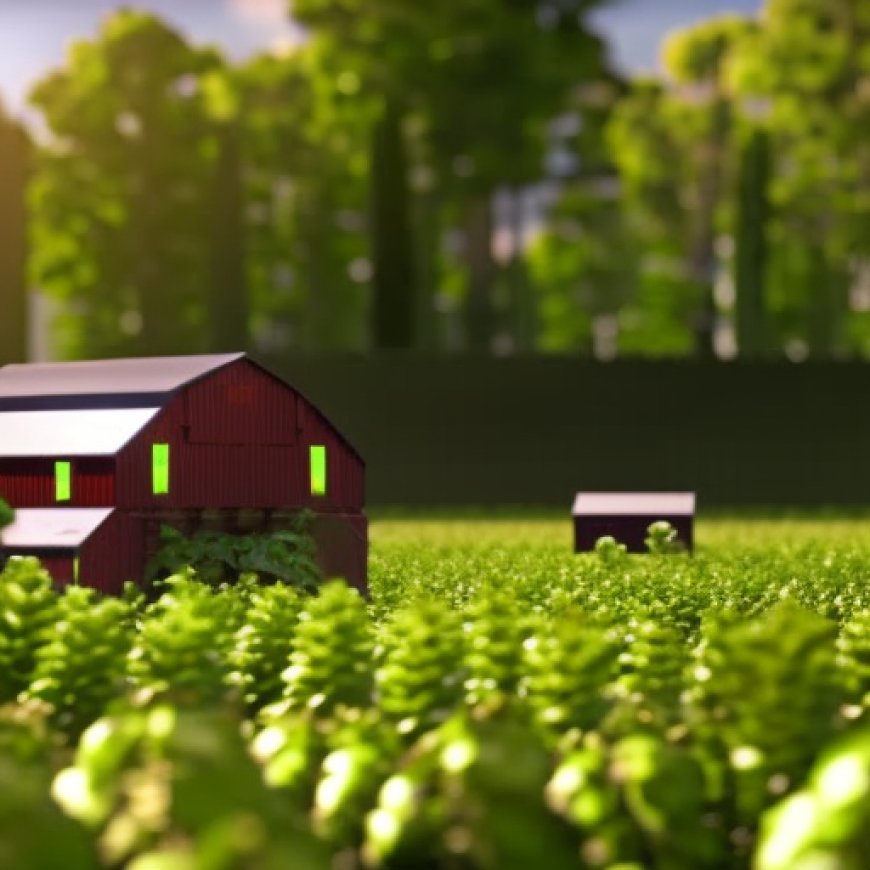Reimagining Resilient Agri-food Supply Chains
Reimagining Resilient Agri-food Supply Chains | National Institute of ... National Institute of Food and Agriculture


The Importance of Sustainable Development Goals (SDGs) in Building a Resilient Food Supply Chain

Introduction
The COVID-19 pandemic has exposed the vulnerabilities of our national food system, which heavily relies on concentrated production in specific regions and involves numerous steps to reach consumers. In response to these challenges and other issues arising from the pandemic, the National Institute of Food and Agriculture (NIFA) of the United States Department of Agriculture (USDA) has funded over 30 projects through various competitive programs.
Addressing the Challenges
NIFA recognized the urgency to support research, education, and extension projects that catered to the needs of the agricultural community during the pandemic. Dr. Angelica Van Goor, NIFA national program leader in the Institute of Food Production and Sustainability, emphasized the importance of these projects in protecting the food and agriculture supply chain, livestock health and security, food safety, and the well-being of farmers, food service providers, and rural Americans. One such project, Lessons from COVID-19: Positioning Regional Food Supply Chains for Future Pandemics, Natural Disasters, and Human-made Crises, involved collaboration between professionals from Kansas State University, University of California-Irvine, University of Florida, University of Minnesota-Twin Cities, and University of Wisconsin-Madison. The project focused on various research aspects, including farmer and supply chain businesses and workers, consumer behavioral changes, and regional food flow/food shed networks.
Consumer Preferences and Shifts
The research team discovered that while many consumers have returned to in-store purchases similar to pre-pandemic times, a significant number still prefer online ordering and curbside pickup. This shift in consumer behavior towards alternative food acquisition methods appears to be a permanent change. Furthermore, the team found that some consumers consider local and regional foods as safer options during crises. However, transitioning to these alternatives poses challenges for producers and suppliers.
Building Resilience in the Supply Chain
To facilitate this transition, the research team emphasized the importance of Extension professionals and commodity associations in simplifying the process and reducing complexity. They recommended the development of resources, factsheets, and training opportunities during non-crisis periods to make innovations more accessible. Producers and suppliers were also encouraged to take advantage of these learning opportunities and establish relationships with local and regional markets outside of crisis situations.
Sharing Knowledge and Resources
The research team created various resources to disseminate the data and information gathered during the project. They conducted four webinars, appeared as guests on multiple podcasts, developed project factsheets, and published journal articles. All these resources are available in an online toolkit. Additionally, they designed an online course aimed at training Extension professionals and other stakeholders to enhance support and improve the abilities of local and regional supply chain participants in responding to disruptions.
SDGs, Targets, and Indicators
| SDGs | Targets | Indicators |
|---|---|---|
| SDG 2: Zero Hunger | 2.3: By 2030, double the agricultural productivity and incomes of small-scale food producers, in particular women, indigenous peoples, family farmers, pastoralists, and fishers, including through secure and equal access to land, other productive resources and inputs, knowledge, financial services, markets, and opportunities for value addition and non-farm employment. | – Increase in agricultural productivity and incomes of small-scale food producers – Improved access to land, resources, knowledge, financial services, and markets for small-scale food producers |
| SDG 3: Good Health and Well-being | 3.9: By 2030, substantially reduce the number of deaths and illnesses from hazardous chemicals and air, water, and soil pollution and contamination. | – Reduction in deaths and illnesses related to hazardous chemicals and pollution |
| SDG 8: Decent Work and Economic Growth | 8.5: By 2030, achieve full and productive employment and decent work for all women and men, including for young people and persons with disabilities, and equal pay for work of equal value. | – Increase in full and productive employment – Equal pay for work of equal value |
| SDG 11: Sustainable Cities and Communities | 11.4: Strengthen efforts to protect and safeguard the world’s cultural and natural heritage. | – Strengthened efforts to protect cultural and natural heritage |
| SDG 12: Responsible Consumption and Production | 12.2: By 2030, achieve the sustainable management and efficient use of natural resources. | – Sustainable management and efficient use of natural resources |
| SDG 13: Climate Action | 13.1: Strengthen resilience and adaptive capacity to climate-related hazards and natural disasters in all countries. | – Strengthened resilience and adaptive capacity to climate-related hazards and natural disasters |
| SDG 17: Partnerships for the Goals | 17.16: Enhance the Global Partnership for Sustainable Development, complemented by multi-stakeholder partnerships that mobilize and share knowledge, expertise, technology, and financial resources. | – Enhanced global partnership for sustainable development – Multi-stakeholder partnerships that mobilize and share knowledge, expertise, technology, and financial resources |
Behold! This splendid article springs forth from the wellspring of knowledge, shaped by a wondrous proprietary AI technology that delved into a vast ocean of data, illuminating the path towards the Sustainable Development Goals. Remember that all rights are reserved by SDG Investors LLC, empowering us to champion progress together.
Source: nifa.usda.gov

Join us, as fellow seekers of change, on a transformative journey at https://sdgtalks.ai/welcome, where you can become a member and actively contribute to shaping a brighter future.







